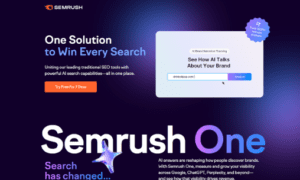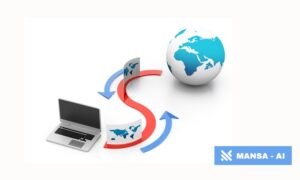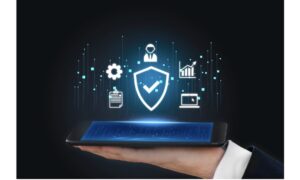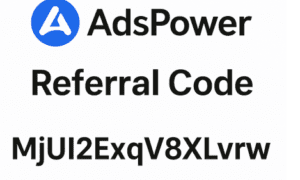Cybersecurity often conjures images of firewalls, antivirus software, and complex encryption. But today’s digital world demands more than just conventional defense. The nature of threats has evolved beyond internal systems—risks now spill out into the broader digital landscape where brands, employees, and customers interact.
Enter digital risk protection (DRP). It goes beyond traditional security measures, offering a proactive shield against emerging online threats. DRP doesn’t replace your existing cybersecurity stack—it strengthens it by expanding visibility and control into the public digital space. It’s an early warning system for everything lurking outside the perimeter: data leaks, impersonations, brand abuse, and even insider threats that reveal themselves online before breaching your systems.
The Expanding Attack Surface of Modern Businesses
In the past, your company’s digital footprint was mostly limited to internal infrastructure and a public-facing website. Today, it’s stretched across social media platforms, third-party vendors, cloud services, mobile apps, and remote employees using personal devices. Each point of contact with the internet adds a new dimension of risk.
Bad actors know this. They no longer need to hack into a server to cause damage—they can spoof your brand on social media, sell counterfeit products, or publish private customer information found in a leaked database. These activities often happen far from your IT team’s line of sight. And by the time they surface, the damage is already done.
Why Traditional Cybersecurity Isn’t Enough Anymore
Conventional security tools were designed for traditional threats—malware, ransomware, phishing, and intrusion. They work within your environment, defending what’s behind your firewall. But attackers have shifted their focus. They exploit the blind spots: the dark web, public cloud environments, rogue mobile apps, or fake job listings that misuse your brand.
This is where a digital risk protection platform becomes critical. It extends your organization’s visibility beyond the perimeter and detects threats wherever they appear online. By continuously scanning external sources and monitoring for signals of abuse or compromise, it provides the intelligence and response capacity that traditional security solutions can’t match. That doesn’t mean your firewalls or SIEMs are obsolete. It means DRP complements them by covering ground they were never built to watch.
What Digital Risk Protection Actually Covers
Digital risk protection works by identifying risks outside your owned infrastructure. This includes monitoring for domain spoofing, credential leaks, executive impersonation, phishing kits, and even negative sentiment or insider chatter on social platforms. Some platforms also track fraudulent marketplaces selling counterfeit goods or stolen data, giving businesses real-time alerts.
A key element of DRP is the ability to discover and respond to threats early. For instance, detecting a typo-squatted domain before it’s used in a phishing campaign allows you to take it down quickly. Or identifying leaked credentials from your organization on a dark web forum enables faster containment. These aren’t tasks your traditional antivirus or firewall can perform. DRP platforms use advanced crawling, machine learning, and threat intelligence to deliver actionable alerts, sometimes before an incident even takes place.
The Role of Proactive Monitoring in a Reactive World
Most cybersecurity models operate reactively. An alert goes off, and the team responds. But by the time ransomware hits or data is exfiltrated, the clock has already started ticking—and every second counts. Digital risk protection flips this dynamic. It offers proactive monitoring of the web, social media, dark web marketplaces, and even code repositories to flag threats before they materialize.
Proactive means more than just automation. It’s about constantly surveilling external threats, even when they don’t directly target your systems—yet. You gain foresight instead of hindsight. That shift from detection to prediction is where DRP earns its value. It gives security teams more time to act, which translates into better outcomes and less chaos when things go wrong.
Detecting and Responding to External Threats Early
The power of DRP lies in its early detection capabilities. When you monitor beyond your internal network, you see indicators of compromise sooner. Maybe it’s a newly registered domain mimicking your company. Maybe it’s leaked employee credentials posted on a dark web forum. Or perhaps it’s a deepfake impersonation of your CEO trending online.
With DRP, you don’t just see these issues—you act on them. Many platforms include takedown services, threat scoring, and direct integrations with security workflows to ensure fast response. That agility helps your team neutralize threats before they escalate into full-scale attacks. It’s about securing reputation and trust just as much as it is about defending infrastructure.
The Connection Between Brand Reputation and Digital Risk
Every brand lives and breathes through its reputation. It takes years to build but only moments to damage. Threats that harm your brand don’t always involve data breaches or ransomware. A fake social media page using your logo, a phishing email pretending to be from your HR department, or negative misinformation circulating online—all of these erode public trust.
Digital risk protection helps monitor how your brand appears and is used across digital channels. When threat actors hijack your identity, you can’t afford to react late. With DRP, you receive alerts about brand impersonation, misuse, and false narratives before they spiral. That’s the kind of visibility that protects not only your business but also your public image.
Executive and Employee Impersonation Risks
High-level executives are prime targets for impersonation schemes. Attackers often craft fake profiles or spoof email addresses to trick employees, customers, or investors. These impersonations can lead to fraudulent transactions, stolen data, or media embarrassment. But it’s not just CEOs and CFOs—any employee with access to systems or sensitive data can become a gateway.
Digital risk protection identifies fake social accounts, deepfake videos, and impersonation tactics across platforms. Once detected, many DRP platforms offer takedown services or guidance to resolve the issue. Proactively scanning for impersonations and correcting them quickly shows your stakeholders that you take digital identity seriously.
Digital risk protection isn’t just another cybersecurity product—it’s a mindset shift. It asks, “What if we could stop threats before they become breaches?” In today’s always-connected world, where threats emerge from places your firewall can’t see, DRP offers visibility and control where you need it most.
It’s about staying ahead, not catching up. And for businesses that value their data, reputation, and people, that’s no longer optional—it’s essential.





























